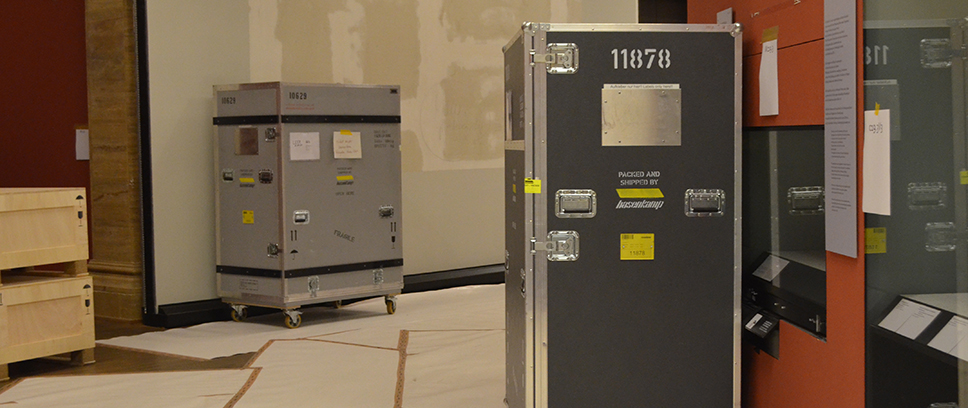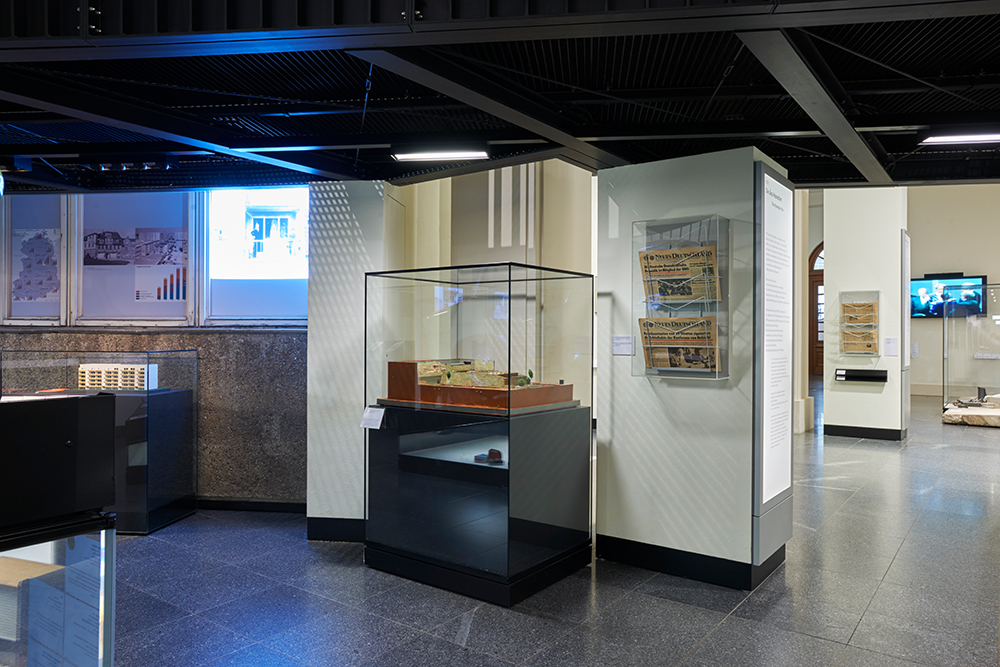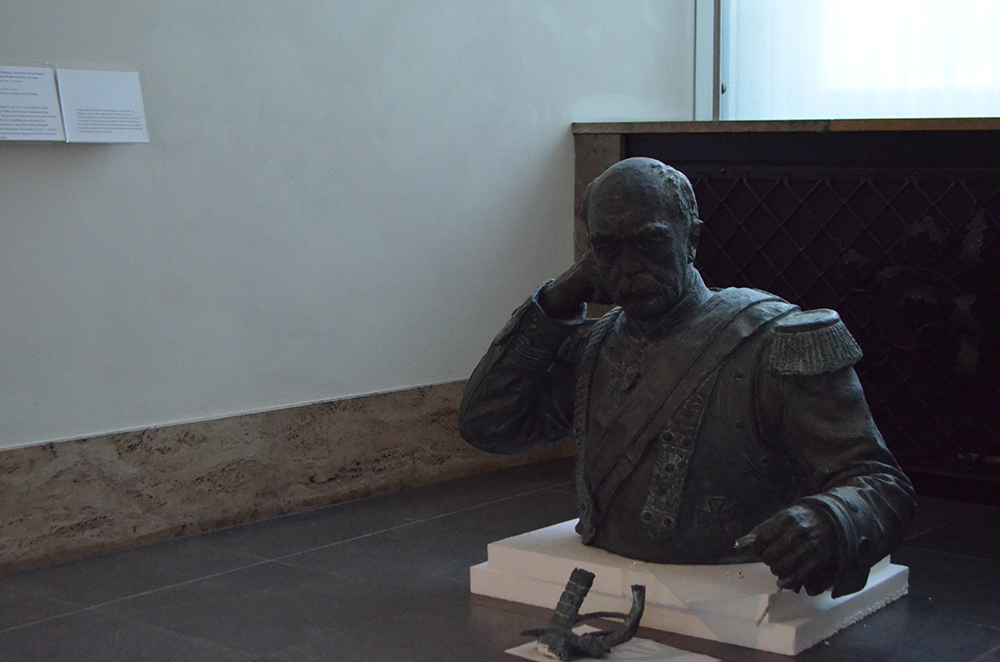
5 Questions for: Carola Jüllig
26 January 2022
The Zeughaus, the Deutsches Historisches Museum’s main building, is currently closed for renovation and the permanent exhibition “German History from the Middle Ages to the Fall of the Berlin Wall” is being carefully dismantled and put into storage. At the same time, the DHM is busy working on plans for a new Permanent Exhibition – a major project affecting all departments across the museum. In our interview series „5 Questions for…“, we give museum curators and staff the chance to talk about their personal memories of the last permanent exhibition and what they are working on now. Carola Jüllig, head of Photographic Collections, also took a look into the past as part of this series.
Ms. Jüllig, the permanent exhibition shut in late June 2021. Was there a particular object or section in it that occupies a special place in your memory as a curator?
Carola Jüllig: I worked with my former colleague Regine Falkenberg in curating the chapter on the postwar period, from 1949 to 1994. That’s why one object from that section remains lodged in my memory. It was a prefab wall panel from a housing unit which we received as a donation from a housing cooperative in Berlin-Marzahn. It was the very first object to enter the Zeughaus, which was still empty at that point. An oversized-cargo hauler was commissioned to transport the object to site and get it into the building. The thing weighed several tons and a local TV crew turned up to record the action. It was a good way to get the ball rolling for the project. This was the moment when we slowly started to get a feel for how the exhibition would look within the space, after spending months and months planning it on paper.

You were involved in the planning stages and were at the opening in 2006. What do you remember most from that time?
What I remember most was that during the installation phase the curators often found themselves standing with the conservators in front of the display cases and together we would spend ages debating and trying out different display scenarios for the objects. We’d often have to abandon our first idea and settle on some other display format. Here’s one obvious example: one of the showcases, custom-made for the occasion, turned out to be too small – someone had put the decimal point in the wrong place in the measurements.
I can only say it was very stressful, especially towards the final stages. Due to delays, we ended up with only three days left to put up the gallery labels. So, together with my colleague, I would go from cabinet to cabinet on my knees sticking the labels on. The stone floor of the Zeughaus building was cold at the time, while outside it was over 30 degrees. The whole thing was physically and mentally demanding.
What was the biggest challenge for you when dismantling the permanent exhibition and how were you involved in the process?
I was not involved in the dismantling itself. But of course I was available for any questions from conservators that arose in the course of dismantling the section that I had set up 15 years earlier.
The corona pandemic presented this massive project with additional challenges. Since I volunteered to supervise the rapid-testing of the technical crew and conservators involved on site during the dismantling, I ended up being in the galleries even after they had closed to visitors. It was amazing to see how quickly the dismantling took place. Having given numerous tours and spent a lot of time there, I was left with a strange feeling – the exhibition was like a tree shedding its leaves in autumn. I also got to observe the dismantling of certain objects that I hadn’t noticed during the installation phase, like, for example, one day I came in and the statue of Bismarck in the foyer was standing there with the stomach part missing. It was an interesting sight.

Can you give us an idea of the scale of the thing: how many objects were featured in the exhibition from your collection alone?
The section I curated at the time contained around 850 objects.
In 2015, I took up the post of head of the Picture Archive. Until that point, only a few postcards, photos, or photo albums from the Archive went on display in the Zeughaus. Moreover, a large part of them were facsimilies, not originals.
Over the years, some of the objects from my collection area were swapped for others due to conservation concerns. And on top of that, some sections were altered, whenever new acquisitions were included or certain historical topics were revised. Although we like to call it a “permanent” exhibition, it isn’t really permanent and it’s certainly not static.
Is there anything you think we should look out for when planning the new permanent display?
Since my gaze has shifted in the last few years to collecting photography, it would be nice to see this medium play a more visible role in the future exhibition.
The Picture Archive contains negatives, prints, and artist estates as well as endowed private collections, so quantitatively it is probably the museum’s largest collection, and one which has something on every imaginable subject. The same is true of the postcards, which were rarely ever on view in the last permanent exhibition.
In addition to using photographs as visual documentation of historical events, the medium of photography could also be presented as a historical subject in itself. For example, we could trace the medium’s rise to popularity. After all, photographs are just as much historical sources as documents and files are and should also be subjected to the same critical scrutiny.